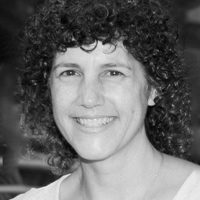Michelle: Great, Thanks everyone for joining us for this webinar today. This is part of a series of webinars to prepare for the ATP Exam. Today's focus is recreation technologies. Throughout this course we are going to be talking about two main areas that tend to fall under recreation technologies, recreation and exercise. Under recreation we are looking at goals for recreation, games, video games, sports, outdoor activities, and even going to amusement parks. For exercise we are going to briefly look at accessible exercise equipment, as well as virtual reality which is sometimes being used for exercise purposes.
ATP Certification
Now as I mentioned, this is part of a series designed to help prepare a potential candidate for the ATP certification examination. ATP is the Assistive Technology Professional certification that is offered through RESNA. It is designed to demonstrate a basic level of competence in the area of Assistive Technology. Currently over 4000 people have their ATP certification. This includes information to help prepare someone for the exam. It is certainly not a substitute for experience, and the examination itself is not going to go into great depth into a topic such as recreational technologies, but it is important that the ATP is aware of recreational technologies. The candidate may also fulfill specific pre-requisites that are required before taking the examination. Here is the website that lists all of these eligibility requirements for an occupational therapist; 100 hours of work experience is required over six years before taking this examination.
Goals
Hopefully, all of us recreate some of the time. It is important that we take break from other things going on in our lives and relax. Recreation can be something that we do an individual or that we do with others. Recreation is a part of our lives; it is part of our occupation. Often it is something that often ends up at the bottom of the list, I know it does for me. With my clients it is easy for me to be very involved in say their wheechair seating and mobility and their access to other technology, such as a communication device or using the computer, but I may not really take the time to consider recreation. Recreation has many benefits and one is socialization. Recreation can be defined rather broadly, but it can include a number of different tasks. Recreation technologies often focus on adaptive sports. When we think about recreation technologies often we think about something like wheelchair basketball, but there are lots of ways of looking at recreation technologies. I hope to do that with you here today.
Assessment
Who addresses these issues? One discipline may be a therapeutic recreation. This is a specialty area of theirs. They determine how do we help this individual, despite physical, cognitive, or sensory limitations this person may have, to participate in recreation. An occupation therapist could very well be involved in trying to adapt activies as well. There might be involvement from adaptive sports programs. Basically what it really comes down to is whoever is willing to get in there and is motivated to help problem-solve some solutions. It takes creativity. This is where a lot of these recreation technologies have evolved.
When assessing someone for potential interventions to improve their recreation, the client may require adaptions to accommodate motor, cognitive, and/or sensory limitations, like hearing and vision. The adaptations to a recreational activity are going to vary depending on which of these areas need to be addressed and to what extent.
Play
Kids seem to spend all of their time in recreation because they are engaging in play (Figure 1).
Figure 1. Simple toys.
Play is their occupation and it is very important to provide this to our youngest clients. This usually involves children, but keep in mind that as adults we play as well. Our toys jsut change a little bit. In general, there are some toys that are rather easy to play with, or can be easily modified to make them easier to play with. This is getting a little more challenging, as much of children's play is becoming more and more electronic. Now as an occupational therapist, I would argue this is to the child's detriment. Play provides a lot of developmental benefits to kids. It provides a foundation for future learnings, and is very important to provide. But if this child has motor, cognitive, or sensory limitations, traditional toys might be difficult. We have to take field trip to a place like Toys R Us, hunt around, look at the toys that are available for items that are easy to manipulate or can be modified. There are also specialty catalogs that offer toys that are also easy to manipulate.
